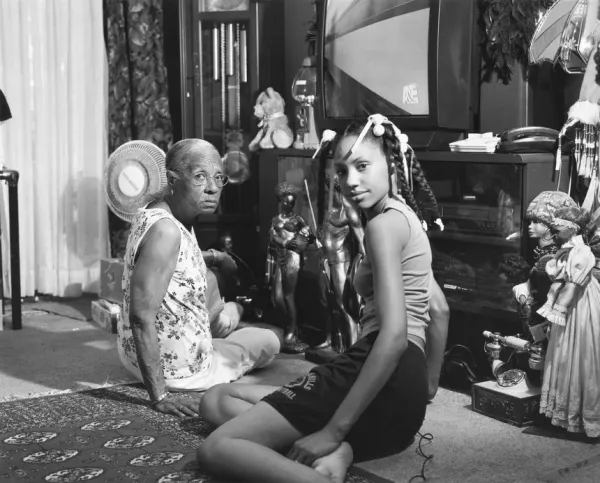I’m Not Racist, So What More Can I Do?

If you’re reading this, there’s a good chance you already care. You believe in equality. You’re against racism. You might have spoken out in conversations, shared a few resources, or taken a stand when it felt important.
But then comes the question that many well-meaning non-Black allies ask themselves: I’m not racist, so what more can I do?
It’s an honest and essential question. It shows you’re not content with being passive. You want to understand how to contribute meaningfully to racial justice, beyond just holding the right beliefs. In this post, we’ll unpack what it means to go beyond “not racist” and how to show up in ways that are active, engaged, and long-lasting.
Why “Not Racist” Isn’t Enough
Many people see racism as something overt; slurs, hate crimes, explicit discrimination. They think if they’re not doing any of those things, they’re in the clear.
But racism is not just about personal prejudice. It’s also about systems, history, and structures that continue to advantage some while disadvantaging others. You don’t have to be intentionally harmful to benefit from these systems. That’s why simply saying, “I’m not racist,” doesn’t absolve anyone from responsibility.
To create meaningful change, we need more than passive belief. We need anti-racism, active efforts to challenge and dismantle racism in all its forms.
The Difference Between Non-Racism and Anti-Racism
Think of it this way:
- Non-racism is a stance. It’s a belief that racism is wrong.
- Anti-racism is a practice. It’s a set of actions taken to confront racism wherever it appears — in ourselves, in our communities, in our institutions.
Being non-racist may keep you personally comfortable. Being anti-racist often means disrupting that comfort in order to stand alongside those who experience injustice every day.
“So What More Can I Do?”: 8 Powerful Ways to Deepen Your Allyship
This journey isn’t about ticking off a to-do list. It’s about committing to a lifelong process of learning, listening, unlearning, and acting with purpose. Here are eight ways to go further in your role as an ally.
1. Educate Yourself Consistently
Racial justice is not a one-time crash course. It’s a lifelong education. Instead of waiting for Black people to explain racism to you, take the initiative to learn. There are books, podcasts, essays, documentaries, and exhibitions that explore race, history, colonialism, privilege, and power.
Start with voices from Black writers, educators, and thinkers. Learn about the local and global contexts of racism. Seek out stories that rarely make it into the mainstream.
Learning doesn’t end once the headlines fade. Keep going, even when the world isn’t watching.
2. Reflect on Your Own Privilege
Privilege doesn’t mean your life has been easy. It means your race hasn’t made it harder.
Ask yourself where you’ve had advantages others haven’t. Consider the spaces where your voice is heard more quickly, your safety is assumed, your leadership is welcomed. Reflection is not about guilt. It’s about clarity. When you understand your position in the system, you’re better equipped to challenge it.
3. Speak Up! Even When It’s Uncomfortable
It’s easy to post a quote on Instagram. It’s harder to call out a racist joke at the dinner table. Or to challenge a friend’s “well-meaning” microaggression. Or to question your workplace culture when it seems exclusionary.
But this is where allyship lives, in the moments where silence would be easier, but courage is needed. Use your voice to disrupt bias, not just when it’s safe, but especially when it’s not.
4. Take Action Offline
Solidarity isn’t just a digital act. Ask yourself: what does your allyship look like in the real world?
- Are you advocating for equity within the world of photography?
- Are you supporting Black photographers?
- Are you showing up to community events, protests, exhibitions, or workshops?
- Are you volunteering your time or offering your skills where they are needed?
The digital world is powerful. But real change often begins in your neighbourhood, your boardroom, or your own front room.
5. Redistribute Power and Resources
Anti-racism is not just about attitude. It’s also about equity. That means considering where power, opportunity, and money are concentrated — and asking how they can be shared more fairly.
Some practical ideas:
- Fund Black-led initiatives.
- Pass the mic to Black colleagues or creators.
- Step back when a role or opportunity would be better served by someone with lived experience.
- Hire inclusively and review your business practices through a racial justice lens.
These are not random acts of kindness. They are reparative actions rooted in justice.
6. Don’t Centre Yourself
This one is important. Sometimes, non-Black allies become so eager to help that they end up dominating the space.
They talk over Black voices. They turn every discussion into how hard they are trying. They feel hurt when they’re challenged. They expect praise for doing the bare minimum.
This can turn allyship into another form of control.
Instead, practice humility. Listen more than you speak. Accept feedback without becoming defensive. Remember, this is not about you, it’s about the people and communities most affected.
7. Stay Consistent
Being anti-racist is not a seasonal commitment. It’s not a social media moment. It’s a long-term, everyday practice.
Keep showing up. Keep speaking out. Keep learning. Even when the hashtags disappear. Even when the news cycle shifts. Even when nobody claps for you.
This consistency is what builds trust. It’s what proves that your allyship is real.
8. Support Black-Led Platforms Like theBLKGZE
At theBLKGZE, we centre Black lived experience, culture, and creativity. Our work challenges stereotypes and reclaims narratives that have long been distorted or ignored.
You can support this work by engaging deeply. Share our content. Fund our projects. Use your platform to extend our reach. Amplify our voices, but don’t replace them with your own.
Most of all, bring what you learn into your daily life. Change starts there.
From Passive to Participating: A Shift in Mindset
It’s easy to say, “I’m not the problem.” It’s harder to ask, “Am I part of the solution?”
Anti-racism is about shifting from passive awareness to active participation. It’s about understanding that good intentions are not enough if they don’t translate into action. And it’s about letting go of the fear of “getting it wrong” so that you can start doing what’s right.
A Note to Allies: Progress, Not Perfection
You will make mistakes. You will get things wrong. You will feel unsure, maybe even embarrassed. That’s okay.
The goal is not perfection. The goal is progress. Stay open. Stay teachable. Let the discomfort sharpen your awareness, not shut you down.
If you’re asking, “What more can I do?” — that’s a good place to begin. The real answer lies in what you’re willing to do, again and again.
Final Thoughts: This Is a Journey, Not a Checklist
Racism is deeply rooted. It shows up in systems, language, policies, and everyday interactions. Undoing it takes time. It takes courage. And it takes people, especially those with privilege, choosing to act, not just believe.
Being “not racist” might keep things calm. But being anti-racist builds something better. A fairer workplace. A more honest community. A culture of equity and respect.
So if you’re ready to go further, we invite you to walk with us. Not just as a bystander. But as someone willing to take risks, stay in the room, and build a different future.
Share on social
If this story sparked something in you, share it. Our voices are powerful, and when we lift each other up, we all see a little clearer.





